The International Association for the Study of the Commons
© 2025 All Rights Reserved
Made with 💛 by Pfister Lab
To accommodate people from multiple timezones, this Workshop will be offered twice:
Enakshi Bhar, Hita Unnikrishnan, and Harini Nagendra
Azim Premji University, Bengaluru, India
The use of geospatial technology has become an integral part of all walks of life today – for example, day to day navigation around neighborhoods, to its applicability in answering a multitude of research questions about landscapes. This is certainly true of urban social-ecological systems (SES) research where land use and land cover changes form an integral part of data which informs theory and discourse. GIS methods are also a useful tool to address a critical gap in urban commons research – that of the poverty of history on the commons – the paucity of research that investigates historical urban SES transformations. Using historical maps from various time periods and sources, one can visualize landscapes of the past and compare it to those of the present-day to understand the extent to which urban spaces have transformed over time, and further what happens to urban commons in those time intervals.
However, in order to do so, one must develop familiarity with both basic techniques of mapping as well as understand how to work with historical imagery in the form of hand-drawn maps, or old toposheets. In this workshop, we aim to introduce participants to the basics of mapping with historical imagery and Google Earth Maps using the open-source GIS platform called QGIS.
A reasonably good internet connection, QGIS preinstalled on a laptop or computer.
Note: Links and instructions to installing QGIS will be provided to the participants two weeks prior to the workshop. Participants are advised to install the software and report any technical issues they may encounter to the organizers one week prior to the event. We will also provide the required imagery to participants at the same time.
